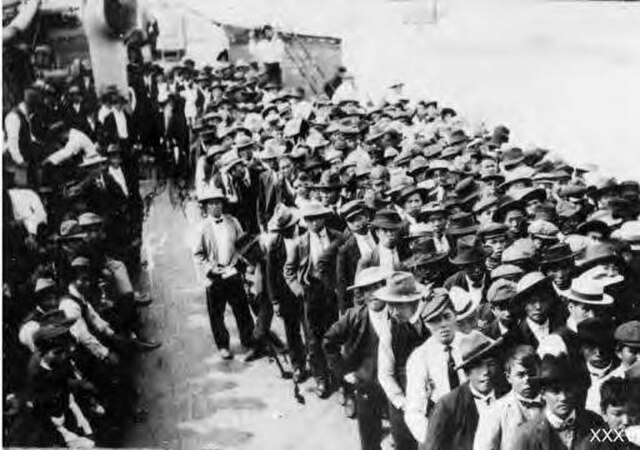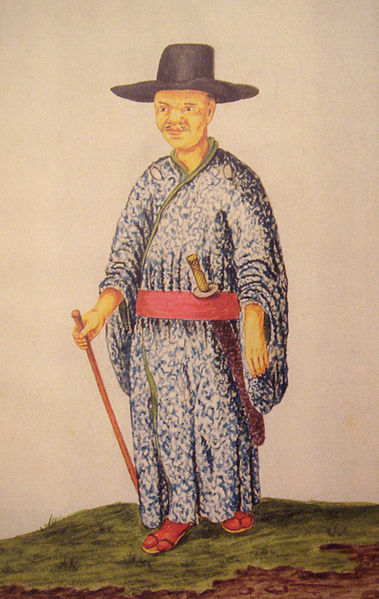Yonsei (Japanese diaspora)
Yonsei is a Japanese diasporic term used in countries, particularly in North America and in Latin America, to specify the great-grandchildren of Japanese immigrants (Issei). The children of Issei are Nisei. Sansei are the third generation, and their offspring are Yonsei. For the majority of Yonsei in the Western hemisphere, their Issei ancestors emigrated from Japan between the 1880s and 1924.
The great-grandchildren of these Japanese-Brazilian (Nipo-brasileiros) immigrants would be called Yonsei.
The Japanese diaspora and its individual members, known as Nikkei (日系) or as Nikkeijin (日系人), comprise the Japanese emigrants from Japan residing in a country outside Japan. Emigration from Japan was recorded as early as the 15th century to the Philippines, but did not become a mass phenomenon until the Meiji period (1868–1912), when Japanese emigrated to the Philippines and to the Americas. There was significant emigration to the territories of the Empire of Japan during the period of Japanese colonial expansion (1875–1945); however, most of these emigrants repatriated to Japan after the 1945 surrender of Japan ended World War II in Asia.
Justo Takayama monument and historical marker at Plaza Dilao in Manila
View of passengers arriving in Vancouver aboard the steamship Kumeric
Japanese Christian in Jakarta, c. 1656
Japanese and Korean children, 1908–1922





